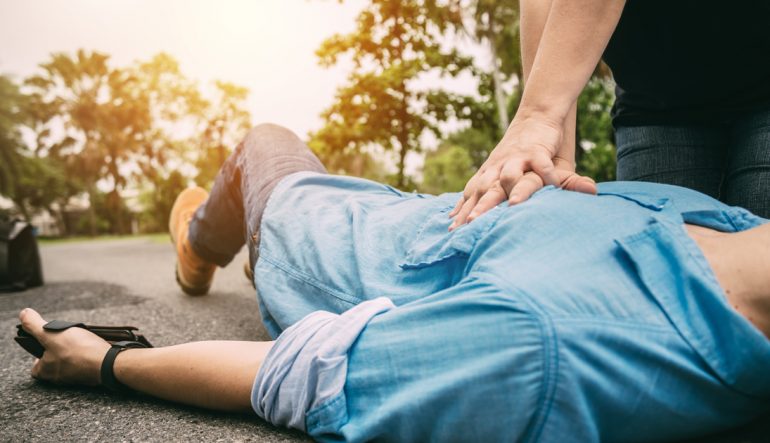Here’s what we know about cardiac arrest: incidence is high, survival is low, and early intervention with CPR and defibrillation save lives.
We know this, because of the weight of evidence that has proven these statements.
Here, we have collected examples of the studies that explain the causes and impact of sudden cardiac arrest, and why early CPR and defibrillation is so important.
Causes and incidence of sudden cardiac arrest
According to the World Health Organisation, cardiovascular diseases (CVDs) – diseases of the heart – are the leading cause of death globally. Nearly a third (32 per cent) of all deaths globally were caused by CVDs in 2019.
Approximately 40-50 per cent of these deaths result from sudden cardiac arrest. This same reference states that of these, around 80 per cent (or six million) deaths occur due to ventricular tachyarrhythmias.
These arrhythmias include ventricular tachycardia (VT) or ventricular fibrillation (VF) – both irregular heart rhythms that affect the heart’s ability to pump blood.
Some perspective: cancer is responsible for approximately 17 per cent of deaths globally.
Cardiac arrest survival rates and the Chain of Survival
Globally, the sudden cardiac arrest survival rate is less than one per cent.
Cardiac arrest is sudden, for two reasons. First, it happens quickly, and without warning. Second, it kills rapidly.
For every minute treatment is delayed, the patient’s chances of survival drop by 7-10 per cent.
The Chain of Survival was developed to arrest the rapid decline in chances of survival among out-of-hospital cardiac arrest patients, and buy time for emergency services to arrive.
The first three steps of the Chain of Survival require a witness or bystander to (1) recognise what is happening and call for help, (2) commence CPR to buy time, and (3) apply defibrillation to restart the heart.
Early defibrillation is key
Ventricular tachyarrhythmias are shockable rhythms – that is, the heart is still functioning, and can be shocked back into a regular pumping rhythm.
Cardiac arrest patients presenting shockable rhythms have a significantly better chance of survival than those with non-shockable rhythms (asystole).
An AED (automated external defibrillator) is a device intended to detect ventricular tachyarrhythmias and automatically deliver the shocks required to restore normal heart rhythm.
Out-of-hospital cardiac arrest patients who receive CPR and defibrillation intervention have significantly higher chances of survival to hospital discharge, compared to CPR-only intervention. This study found that rapid defibrillation prior to any other resuscitation intervention also delivers superior survival outcomes.
Patients have the best chance of survival when an AED is placed within three to five minutes of a witnessed collapse.
The use of AEDs in out-of-hospital cardiac arrests also buys time for emergency services to respond.
AED use in the minutes following an out-of-hospital cardiac arrest also correlates with the largest improvements in survival over time.
Where out-of-hospital cardiac arrests occur
Approximately 80 per cent of all out-of-hospital cardiac arrests occur in homes. The low survivability of sudden cardiac arrest is contributed to by the fact that at-home bystander defibrillation rates are dismal.
It is clear these factors are significant contributors to the low survivability of out-of-hospital cardiac arrest.
Improving community education on sudden cardiac arrest and CPR, and improving household access to AEDs, are problems worth solving.
RELATED ARTICLE: Being ready to buy time



